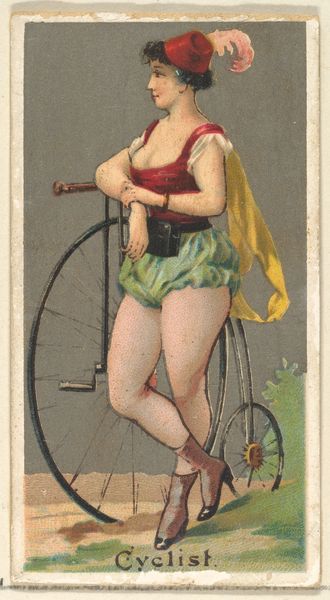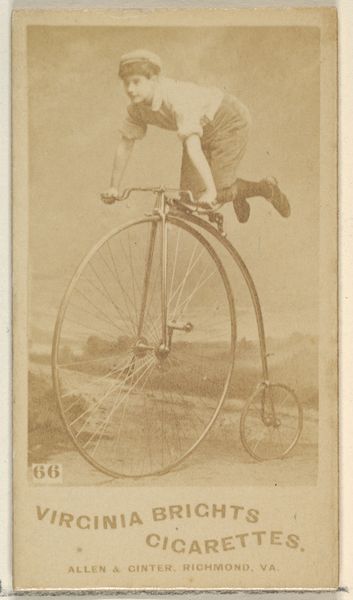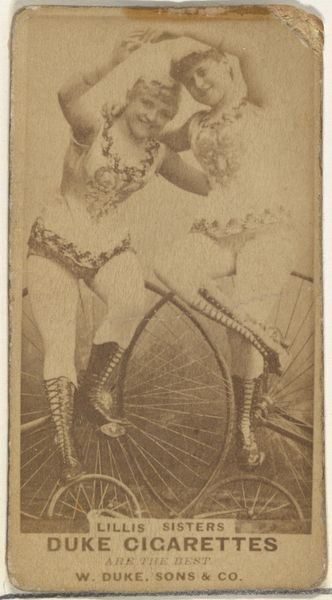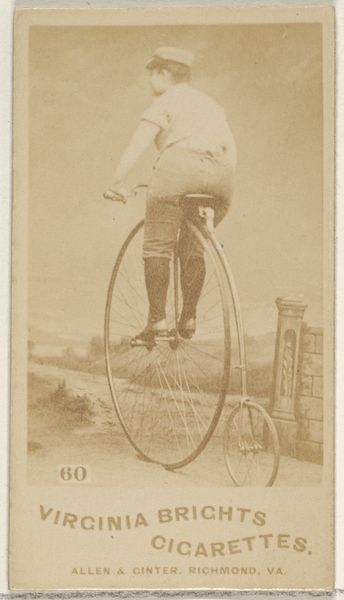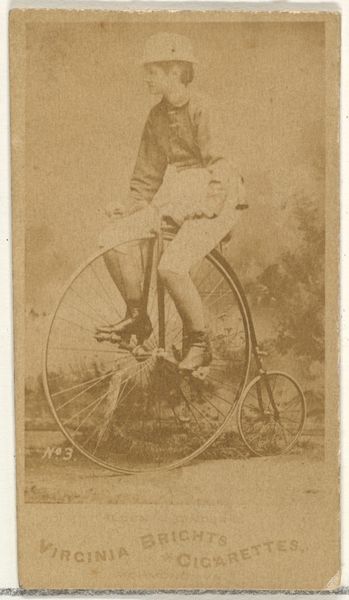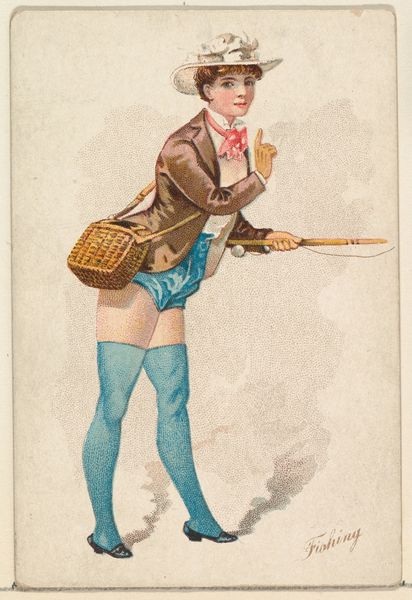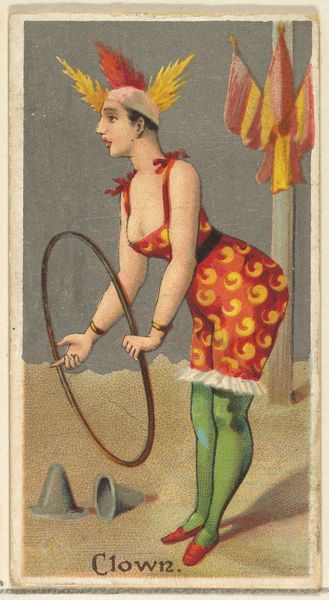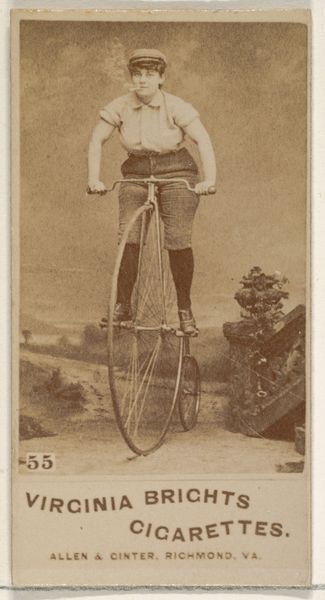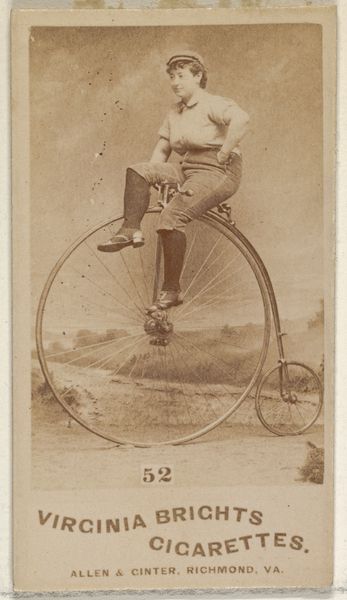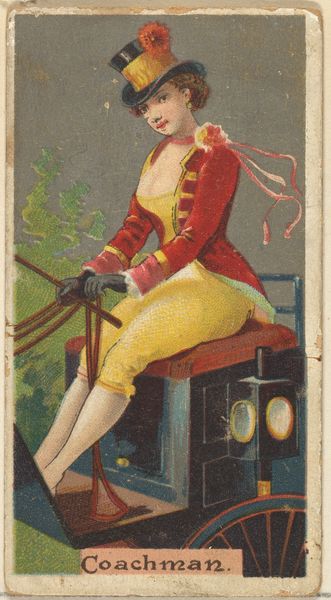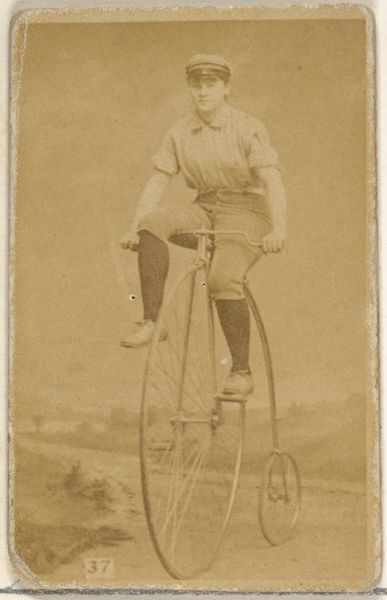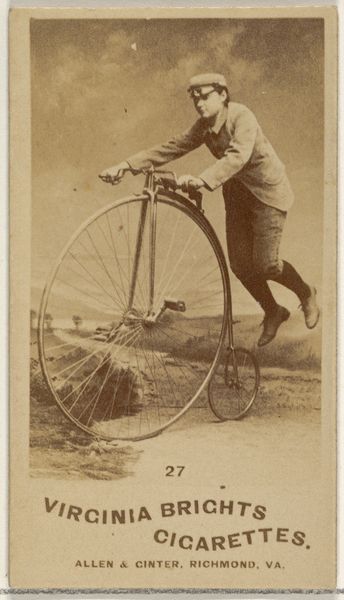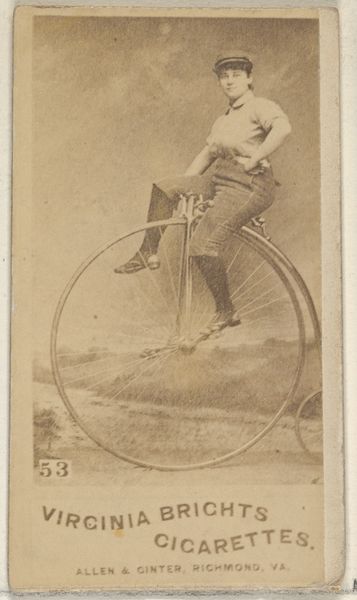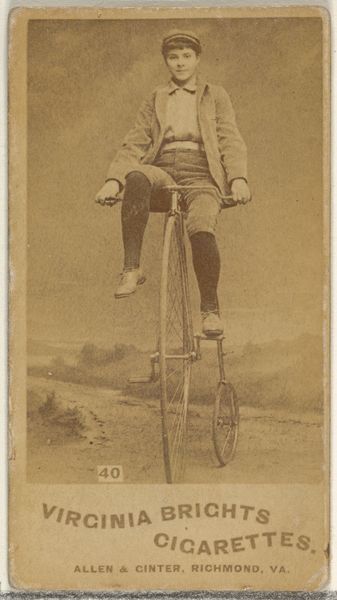
Bicycling, from the Pretty Athletes series (N196) issued by Wm. S. Kimball & Co. 1889
0:00
0:00
drawing, coloured-pencil, print
#
portrait
#
drawing
#
coloured-pencil
# print
#
caricature
#
caricature
#
coloured pencil
#
genre-painting
#
erotic-art
Dimensions: Sheet: 3 3/4 × 2 1/2 in. (9.5 × 6.3 cm)
Copyright: Public Domain
Curator: So here we have "Bicycling, from the Pretty Athletes series" created around 1889 by Wm. S. Kimball & Co. It's a coloured pencil print. What do you make of it? Editor: Well, my first thought is "vaudeville." The pose, the costume—there's something very performative about it. I see both control and spectacle at play. It also feels a bit satirical. Curator: It’s intriguing, isn’t it? Kimball & Co. was primarily a tobacco company; these cards were included in cigarette packs. A tiny thrill, easily consumable. Do you see the connections between labor, representation and consumption? Editor: Absolutely! The high-wheel bicycle itself, the craftsmanship to produce such a spectacle of a machine—is being literally undermined here, in the drawing itself! We have a blurring of labor lines in a late industrial society struggling to codify roles. Curator: There’s an interesting tension between this ideal of athleticism and a burgeoning female eroticism. Think about what’s *not* shown—veiled in color and obscured with the scale of that wheel—hinted at for consumption! Editor: And that costuming! That's hardly functional attire for bicycling! What statement about female ability, labor, and access can be found here? Where does capability end and parody begin? Curator: The piece reflects anxieties around industrial shifts and changing gender roles, right? Bicycles were allowing women unprecedented mobility, freedom. It suggests a playful defiance, yet, crucially, it’s still marketed through consumerism. It is designed to move product. Editor: Yes, mobility packaged and sold back—as a set of limitations, with gender literally trapped within the turning wheels. I wonder, too, about the artists involved in making the actual prints? Anonymous, likely working in rather regimented production lines. Curator: I never considered the conditions surrounding that "invisible" labor force who made such work possible. These are questions that prompt me to want to see and appreciate all of it on a deeper, systemic scale. Editor: It does highlight how commercial art, often dismissed as merely functional or disposable, can be such a layered reflection of the culture that produces it, and what *creates* that culture. Curator: Indeed. Every pencil stroke whispers stories about gender, power, and commerce, even on a seemingly simple promotional card. It makes me want to pick it up and examine it even more carefully, now!
Comments
No comments
Be the first to comment and join the conversation on the ultimate creative platform.
